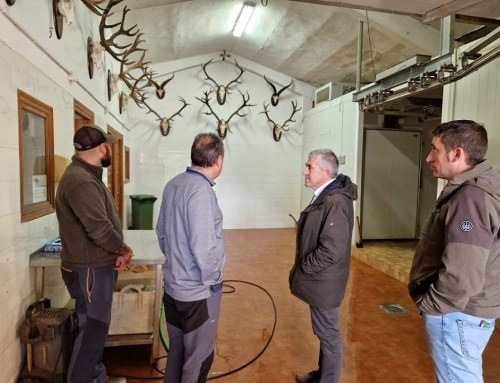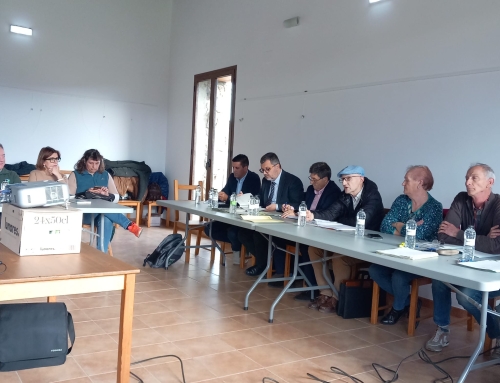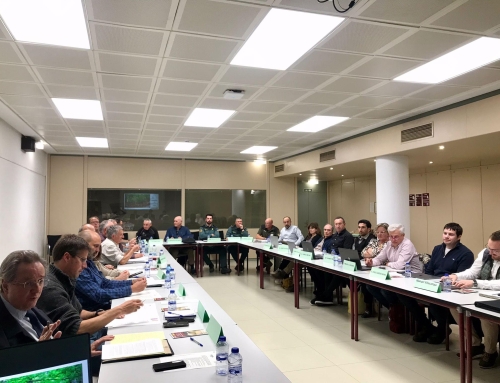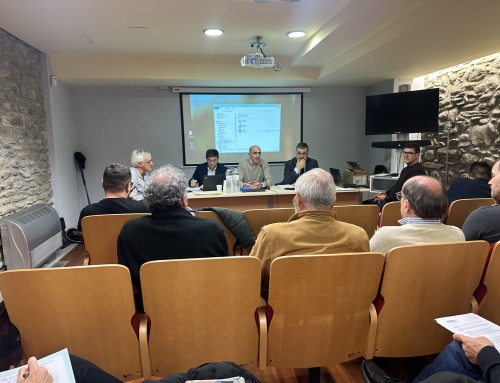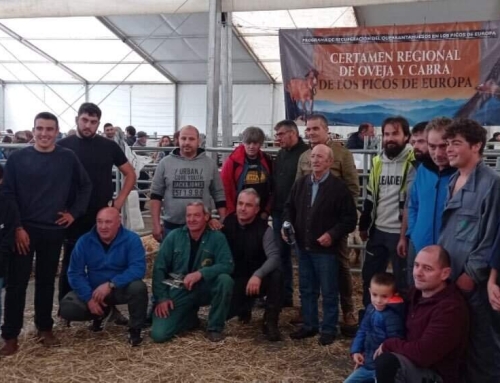
The impact of the 125 wind turbines of the Maestrazgo Cluster: felling of trees, danger to wildlife and damage to the Natura 2000 Network.
The authorization to build the Maestrazgo Cluster was approved by the Council of Ministers and has provoked numerous reactions from political and environmental groups.
20 wind farms will be installed and the windmills will be 200 meters high Last Tuesday, July 23rd, the Council of Ministers approved the authorization to build the so-called Maestrazgo Cluster.
This is the wind power macro-project that will cross the Teruel regions of Maestrazgo and Gúdar-Javalambre and will be one of the largest wind farms in Spain.
It went ahead with the positive vote of the PSOE, while Sumar opposed it.
The project, which would be developed in one of the largest natural areas in Spain, will involve the implementation of 20 wind farms.
Between them they would total 125 wind turbines of about 200 meters high, being one of the largest in existence.
In addition, 173 kilometers of high voltage lines and 327 kilometers of roads would be added.
In all, a total area of about 72,000 hectares would be affected.
Prior to the green light granted by the Council of Ministers, the Teruel Existe movement put on the table the consequences of the development of the Maestrazgo Cluster.
“It could mean the felling of two million adult trees and the razing of almost 2,000 hectares occupied by the project,” they warned at a press conference.
They added that the high voltage line means a “deforestation” of 90 meters wide where it passes and that the forest tracks are “wider than the width of a road”. Irreversible consequences “The deforestation planned with the Maestrazgo Cluster would affect an area equivalent to almost 900 soccer fields”, they explained and it will be within one of the areas “with the greatest biodiversity in Spain”.
This is why they stated that they do not understand where the ecological transition is because “the destruction is immense”.
Among the vegetation that would be cut down to place the giant wind turbines are trees with feet “larger than 13 centimeters” and species such as Scots pine or black pine, junipers, poplar and protected species such as the creeping juniper, yew, holly… “They are going to raze everything to cross the tracks and power lines,” they confessed.
That’s not all, because of these 125 wind turbines, 84 are located within the Natura 2000 Network.
This is a European ecological network of biodiversity conservation areas whose function is to ensure the long-term survival of species.
Special Areas of Conservation (SAC) are included and some 10 kilometers of the high voltage line would cross a Special Protection Area for Birds (SPA).
Javier Oquendo, spokesman for the Platform in Defense of the Landscapes of Teruel, stated that the 20 planned parks directly affect five areas recognized by the Natura 2000 Network and three indirectly.
In parallel, there are 33 species included in the European Union’s Birds Directive, 28 animal species included in the Spanish Catalogue of Threatened Species and 12 plant species registered as endangered or threatened.
The project is also affected at a cultural level.
A large part of the project is located in the Maestrazgo region, where there is a world geopark recognized by UNESCO and where dozens of Sites of Geological Interest are certified. For his part, as reported by the farmer, Joaquín Gargallo, in a press release from Teruel Existe, in the municipalities encompassed by the cluster there are some 200 extensive livestock farms.
“They are destroying a huge number of hectares of forests that generate biodiversity, clean air, water, life and work,” he said.
Gargallo then acknowledged that the Maestrazgo Cluster would be built in one of the areas of the country with the most lightning strikes per square kilometer.
“When there are people in the mountains, who work and live in the area, it is possible to extinguish the fires caused by lightning more quickly,” he said, adding that with the wind turbines installed “the work of extinction is made more difficult”. Reactions The approval was made against the clock and only two days before the deadline.
And the fact is that, according to the times established by the central government in the plan of measures approved to promote the deployment of renewable energies, the Administrative Construction Authorization expired on July 25.
The PSOE did not comment on the issue in the press conference after the Council of Ministers.
The deputies of Sumar, Jorge Pueyo (CHA) and Águeda Micó (Compromís) did, and denounced that the Maestrazgo Cluster is a “speculation project” and accused the socialist party of making a “false ecological transition” because cases such as this project show that they do not develop policies of territorial rebalancing.
They also insisted on the “destruction” that this macro-project implies.
The promoter of the project was Forestalia, but it is currently owned by the Danish investment fund Copenhagen Infrastructure Partners (CIP).
In addition to this change, it has undergone several modifications due to the environmental impact.
The Ministry of Energy Transition and Demographic Challenge (Miteco) removed some 35 wind turbines and two wind farms (from 22 to the 20 approved).
In the meantime, the project has received unfavorable reports, which, as expected, have ended up having no effect.
The Greenpeace platform reported on its X profile its refusal to the Maestrazgo Cluster, appealing to the fact that “large renewable plants in protected areas should be prohibited”.
They even consider that it is one of the examples of “bad practices” that appear in their report ‘Renewables respectful of people and biodiversity’.
For the group, the deployment of renewables is “urgent”, but it has to be done taking care of “the needs of the territory, with citizen participation and environmental guarantees”.
Izquierda Unida – Ganar Teruel joins the current opposition and assess that the approval of the authorization for the construction of this renewable macro-project is “an attack against the ecological and forest heritage” of the province of Teruel.
The coordinator of IU in the province of Teruel, Daniel Palomo, pointed out that once again “the interests of large companies are put before those of the population, the environment and nature”.
Finally, he concluded: “Once again the territory is a place of extraction. Producing cheap energy in exchange for razing our forests and natural areas”.
Podemos and Alianza Verde ratified their rejection of the project due to the “serious effects” it would have on the values of the Maestrazo, “a symbol of Aragon’s natural and scenic heritage”. The federal coordinator of Alianza Verde, Juantxo López de Uralde pointed out that it is “unacceptable” that the Natura 2000 Network has not been protected.
Joaquín Palacín, president of CHA, called on Azcón to stop using the Government of Aragón as a mere “loudspeaker for the interests of the Partido Popular”.
In turn, he announced several parliamentary initiatives in the Cortes de Aragón to prevent the implementation of this “attack on the landscape and the future of Maestrazgo”.
VOX showed its intention to propose a law to protect the landscape and limit the installation of wind farms in the Community.
The Platform in favor of the landscapes of Teruel assures that “it will go all the way” because they are “convinced” that the project is not good for the territory, destroys natural and rural spaces and eliminates tourist attractions in the area.
For the moment, they have opened an initiative at migranodearena.org to raise funds and face the disputes of the Maestrazgo Cluster.
Source: https://www.eldiario.es/aragon/impacto-125-aerogeneradores-cluster-maestrazgo-tala-arboles-peligro-fauna-danos-red-natura-2000_1_11574137.html

